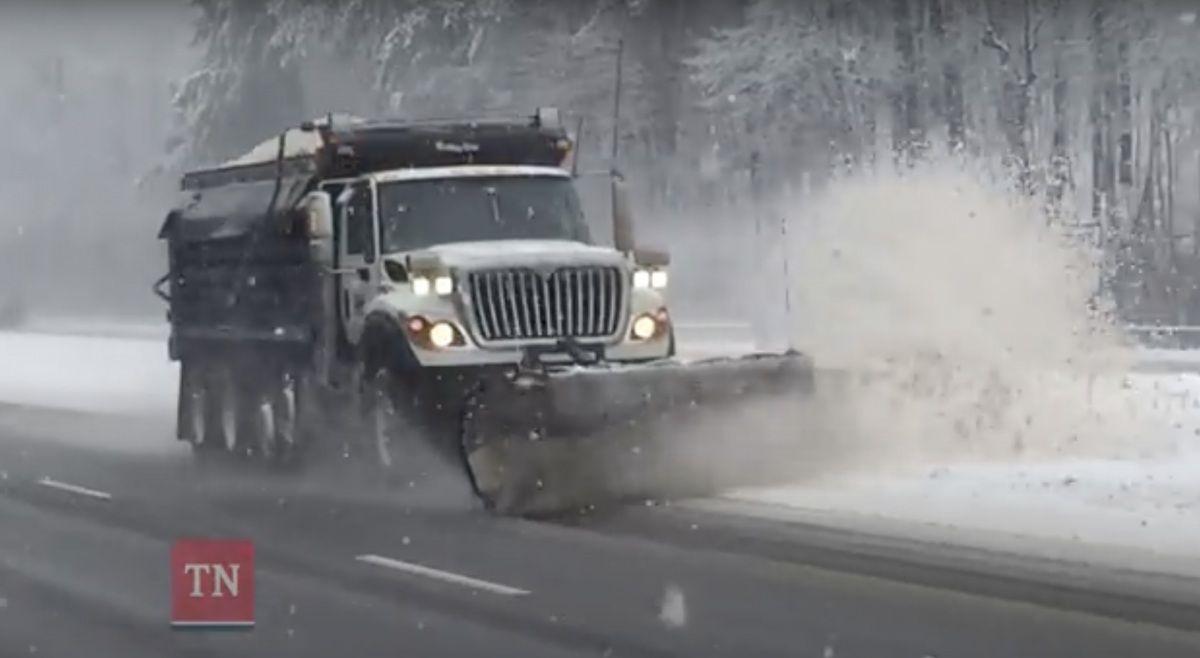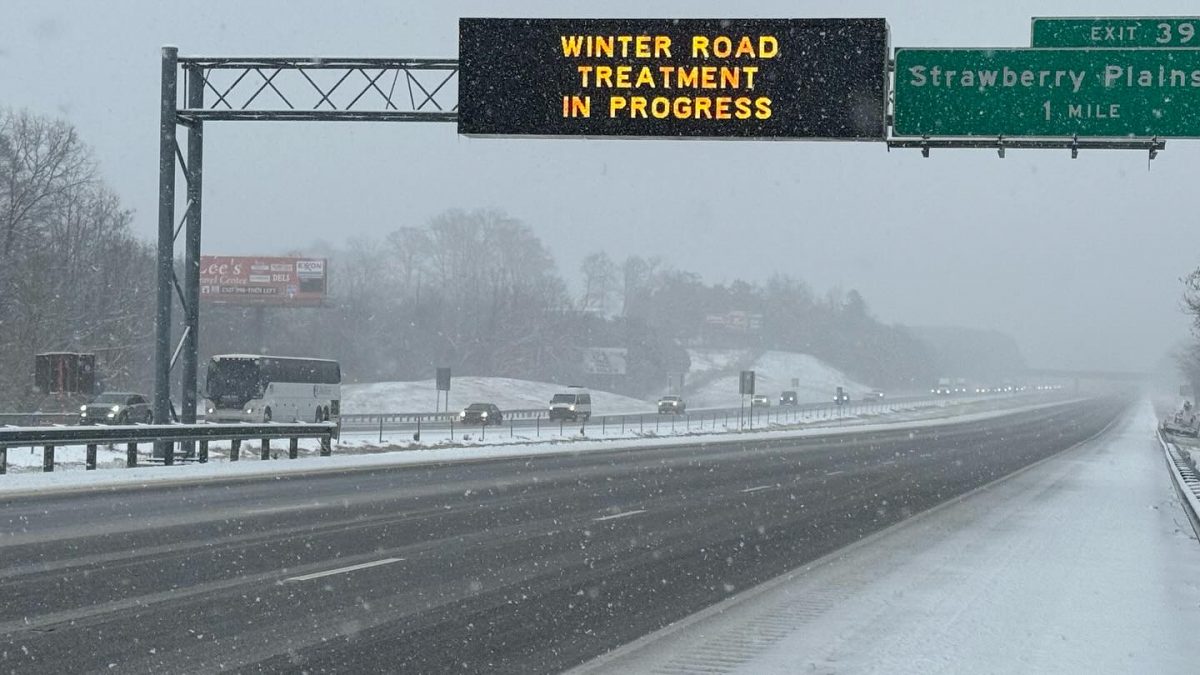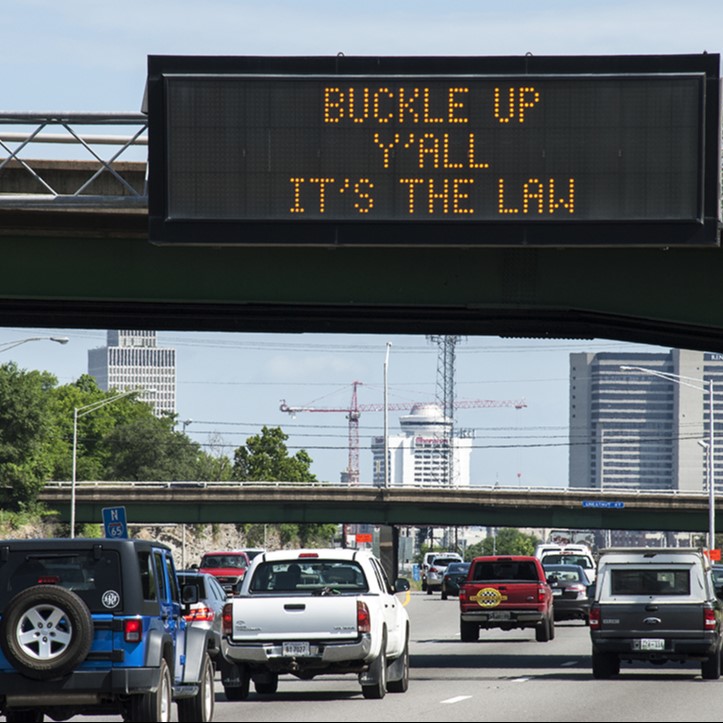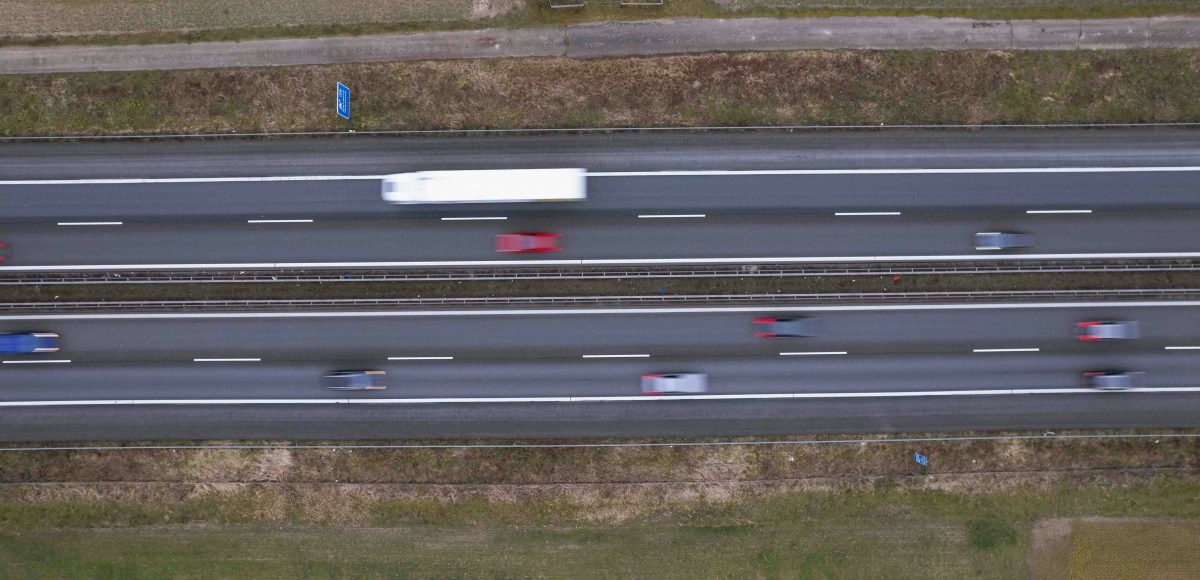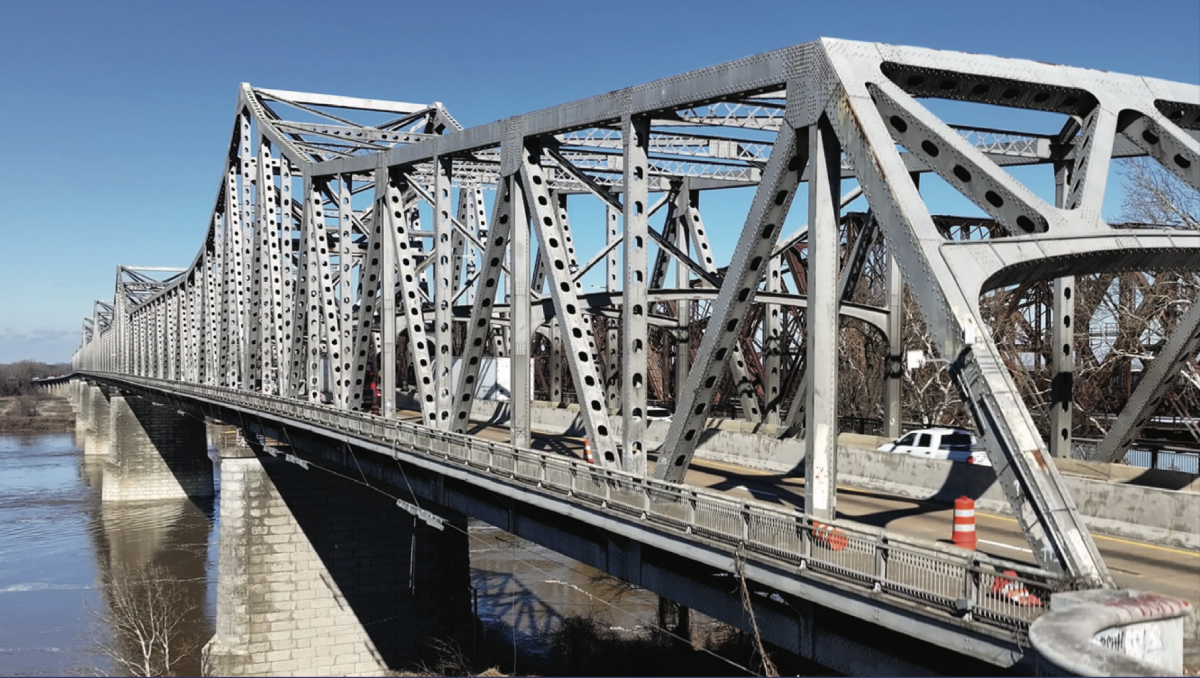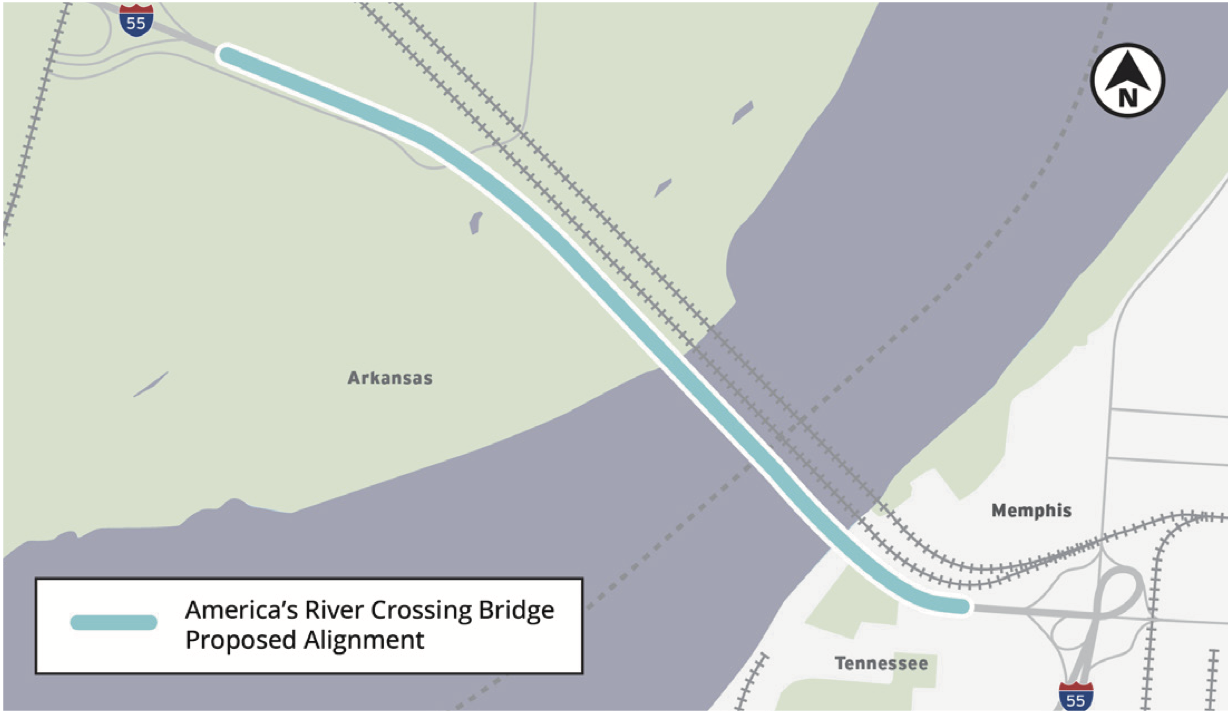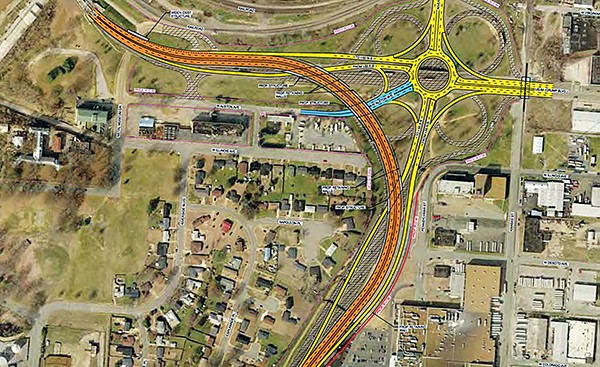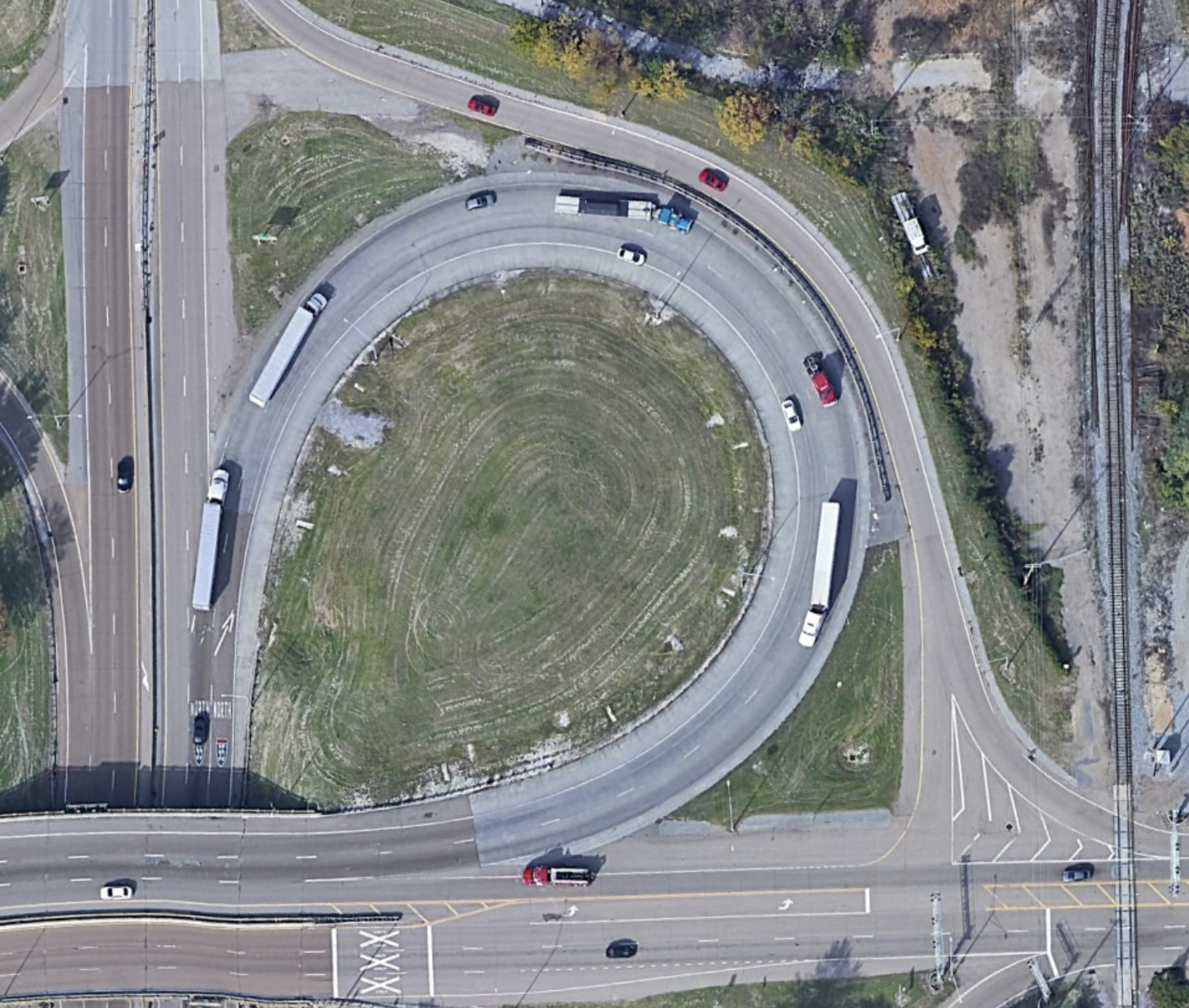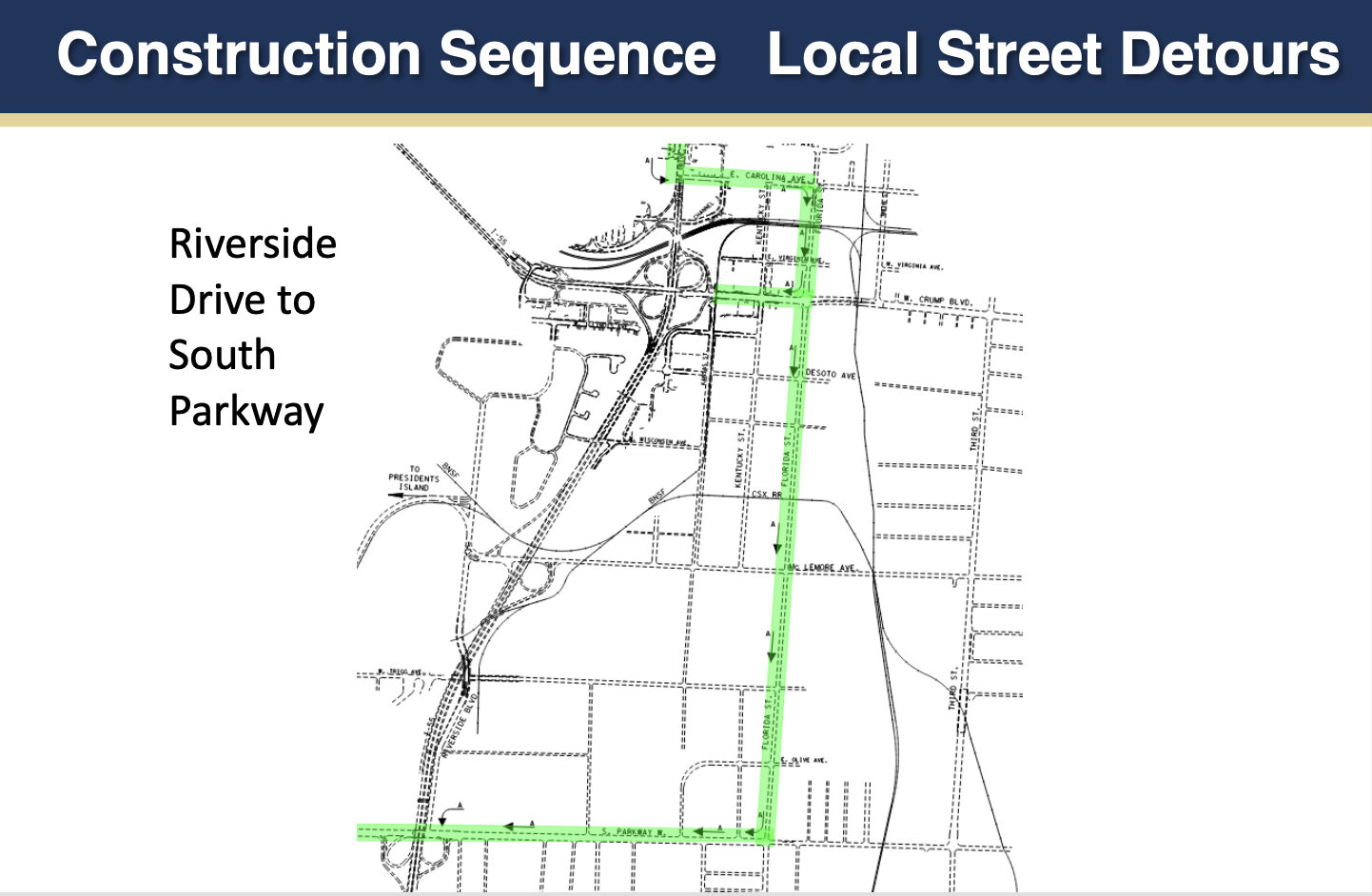We know winter (weather) is coming.
So, how are local agencies preparing for this? Memphis Light, Gas & Water (MLGW)? City of Memphis? Memphis International Airport (MEM)? Tennessee Department Of Transportation (TDOT)?
Here’s an unfiltered look at what they’ve told us (with links to follow the latest from the agencies).
Memphis Light, Gas & Water:
MLGW prepares for cold weather by tracking the weather, having additional crews on standby, and ensuring vehicles are equipped with necessary tools. Tree-trimming crews cleared more than 1,600 miles in 2024 to help reduce electric outages caused by falling limbs.

To combat water main breaks (which can occur when temperatures drop) MLGW has made several capital improvements like installing additional wells. It’s also been insulating water pump motors and conducting a system-wide water valve survey that will keep water flowing from pumping stations to the community.
To combat winter weather challenges, MLGW has implemented the following measures:
· Fleet maintenance: MLGW’s fleet vehicles receive monthly preventive maintenance, with extra attention to charging systems, tires, heaters, windshield wipers, and washer fluid in the winter months.
· De-icer supply: Garages are stocked with de-icer for locks, door handles, and windshields, ensuring crews can work efficiently in icy conditions.
· Cold weather diesel additive: To enhance vehicle performance, a cold weather diesel fuel additive is added to the tanks at MLGW fueling stations.
· Snowplows and brine spreaders: Six fleet vehicles are outfitted with snowplows and brine spreaders to clear access to MLGW facilities and community offices, ensuring essential operations can continue during winter storms.
City of Memphis:
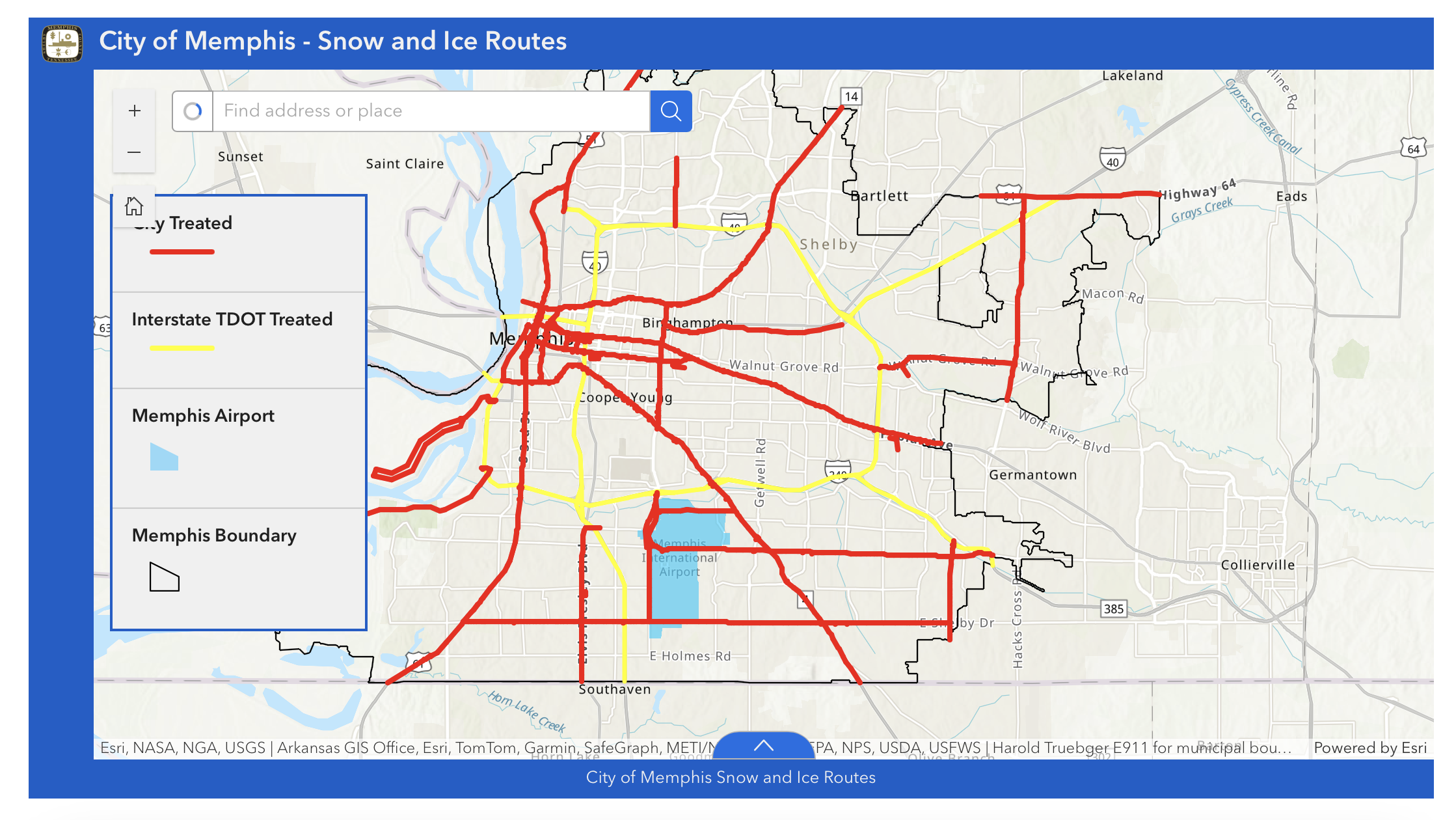
The city of Memphis has a new strategic snow and ice mitigation plan. Under the plan that went into effect on January 1, 2025, Division of Public Works crews will focus on specific routes when wintry weather affects our area, clearing one lane in each direction.
Previously, crews only treated inclines and declines, overpasses, and bridges. Clearing one lane in each direction on targeted routes aligns with what is done in other cities in Tennessee and nationwide.
Instead of a salt/sand mix, crews will treat the streets with straight salt. Using salt only should more effectively melt snow and ice on our roads. Crews will still pretreat with brine when conditions allow.
Instead of a salt/sand mix, crews will treat the streets with straight salt. Using salt only should more effectively melt snow and ice on our roads. Crews will still pretreat with brine when conditions allow.
Check the map to see which routes the city of Memphis will treat. The map also highlights routes cleared by TDOT. This new, focused approach is expected to better serve residents and drivers during winter weather.
Memphis International Airport:
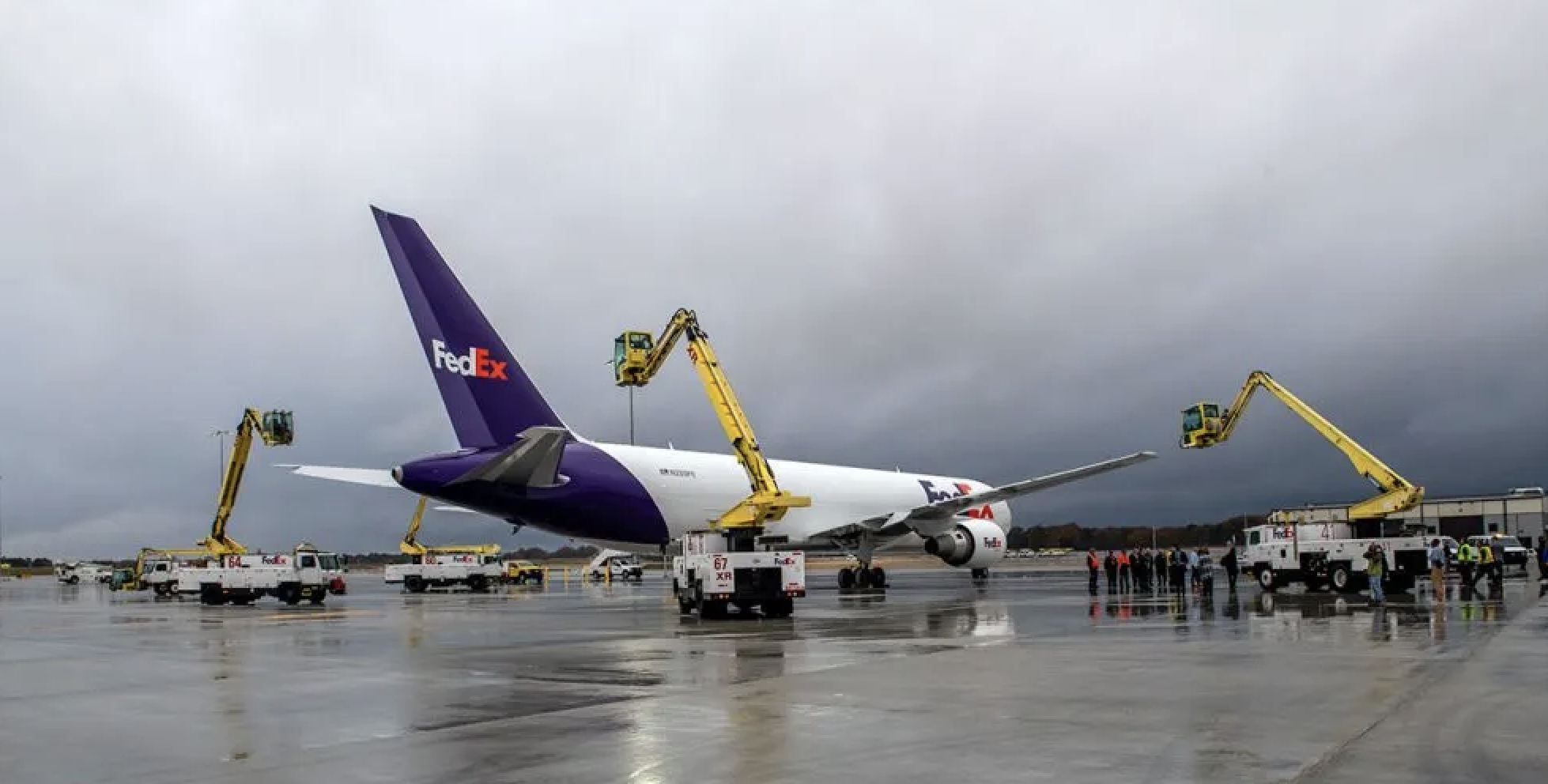
• When winter weather is forecast, MEM schedules crews based on the amount, duration and type of the expected precipitation. Snow and ice require different types of treatment.
• The goal is to prevent the buildup of ice and snow on runways and taxiways so that aircraft can continue to operate safely. Crews also work around the clock to clear ramps, service roads, terminal roadways, fuel farm loading areas, and more.
• MEM has more than 40 vehicles dedicated to snow/ice removal, including snow brooms, plow trucks, snow blowers, liquid and granular de-icing trucks, and tractors.
MEM has more than 40 vehicles dedicated to snow/ice removal, including snow brooms, plow trucks, snow blowers, liquid and granular de-icing trucks, and tractors.
• About 140 employees from airfield and building maintenance are available for snow operations, along with staff from operations, communications, airport police, procurement, and other areas. The vast majority of the [Memphis and Shelby County Airport Authority’s] 300 employees are involved in winter weather operations in some capacity.
• Airfield crews will work around the clock to clear runways.
• MEM’s centralized de-icing facility will be active for airlines to perform de-icing operations as needed.
Airlines:
• Passengers should contact their airline before traveling. Airlines manage all aspects of scheduling and will have the most up-to-date information. Early morning flights in particular could be affected.
• Even if MEM is open with flights arriving and departing, weather across the U.S. could disrupt airline schedules this week.
• Airlines are responsible for all aspects of ticketing, baggage, and gate operations.
• While MEM is responsible for clearing runways and taxiways, airlines handle all aspects of de-icing aircraft including staffing, application and equipment maintenance.
Other passenger information:
• Allow for extra time to get to the airport due to road conditions. It is recommended to arrive at the airport at least two hours prior to scheduled departure.
Tennessee Department of Transportation:

The Tennessee Department of Transportation’s (TDOT) Region 4 is prepared to tackle the ice and snow forecast for this week, ensuring the safety of drivers across the region’s 21 counties.
TDOT West Tennessee at the ready:
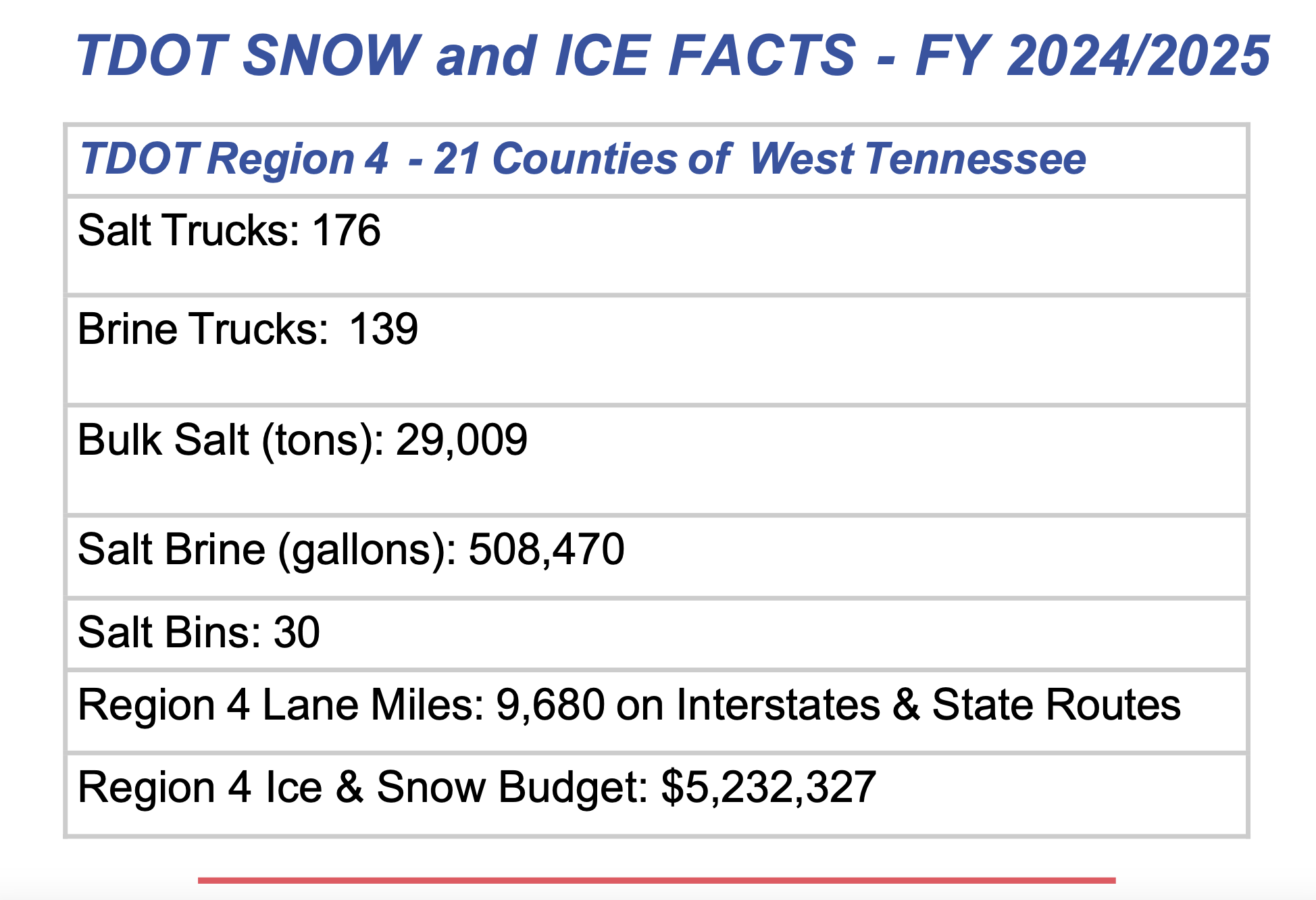
• Snow and ice budget: $5.2 million
• 176 salt trucks
• 139 brine trucks
• 29,000 tons of salt
• 508,000 gallons of brine
• 30 salt bins placed around the region
Maintenance crews are fully stocked with salt, brine, and other materials, to respond as winter weather moves into the area. Region 4’s [West Tennessee] snow and ice budget for this fiscal year is $5.2 million.
Drivers should expect to see crews in West Tennessee pre-treating the interstates and state routes region-wide for the upcoming impacts of winter weather. Crews will prioritize clearing interstates and heavily traveled state routes first, followed by secondary routes. TDOT strongly encourages drivers to prepare to stay off the roads on Friday, January 10, 2025, for their own safety and the safety of workers, giving crews the room they need to do their jobs.
TDOT strongly encourages drivers to prepare to stay off the roads on Friday, January 10, 2025, for their own safety and the safety of workers, giving crews the room they need to do their jobs.
“Our crews have been working diligently to ensure our equipment is ready and materials are on hand to keep the roads clear and safe,” said Jason Baker, Region 4 director. “We encourage all drivers to also prepare for the conditions and adjust their driving habits to stay safe on the road.”
For more information on TDOT’s snow and ice preparations, winter safe driving tips, preparing your vehicle for winter travel and links to road conditions in Tennessee and neighboring states visit: Ice & Snow.
From your desktop or mobile device, get the latest construction activity and live streaming SmartWay traffic cameras. Travelers can also dial 511 for travel information, or follow TDOT on Twitter for statewide travel or in West Tennessee follow here.
As always, drivers are reminded to use all motorist information tools wisely and Know Before You Go! by checking travel conditions before leaving for your destination. Drivers should never tweet, text, or talk on a cell phone while behind the wheel.
